#and so influential in the modern metal scene
Explore tagged Tumblr posts
Text
#ENJOYED#this band is so beyond description in their like. approach to the image they present#and so influential in the modern metal scene#Spotify
1 note
·
View note
Text

I chopped all my hair off and now I’m 100x more aerodynamic and can probably do spin-kicks and shit
#I wish I didn’t look like an ugly angry potato when I’m really just a silly lil guy 😔#I’m sorry I cut off all my long hair but you’ve gotta understand that it’s been 100° here and I sweat so easily and it was so dang heavy#it’s too hot out#the hair stylist was really nice but she was trying to talk to me about metal music and I don’t follow any modern metal bands#she was a lot younger than me and talking about some band that’s supposed to be really influential and like…#I’m sorry I have literally never heard of them but I’m always happy to hear about bands positively impacting fans#anyway the band is apparently playing in Little Rock tomorrow so… that’s cool for them 👍#I haven’t been into metalcore since high school#I sound like a hater but I’m not. it just made me feel like an old man#but then again there are so many bands out there. I’m just not into that scene anymore so I don’t know any of them 🤷🏻♂️#I’m lame#I’m also full of noodles with a cat in my lap so I guess everything is going well at the moment#oh yeah and I had therapy today and that was… depressing. but in a good therapy way.#anyway I love you#100 big kisses for you#you can ignore this#me#selfie#gross boy
3 notes
·
View notes
Note
Ok so i know you did wedding fashions for most of the regions of westeros already but what about the other ones like the north and the vale or the islands. Also the crownlands could be interesting because its a mishmash of westerlands/stormlands/reach/targs and also just plain opulence because royal weddings!!! (Lowkey asking about all these as reference for the multiple ocs rotating in my head at all times. Im a SUCKER for wedding scenes)
Let the wedding bells ring
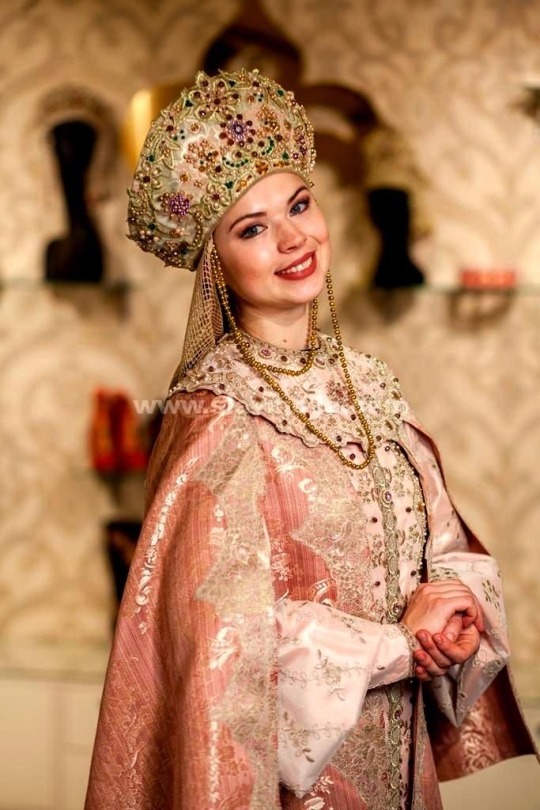

Northern brides in Kokoshniks are very serious business to me. I like to think they’re leftovers of a pre-heraldic time, when the north was more tribal and clan focused. Certain shapes of the headdress and the size signal what your status is, and the types of jewels inlaid in them and embroidery done is indicative of what part of the north a woman hails from. This heralding of what family you came from carried over into the modern era, becoming more elaborate and taking on different shapes as noble houses began to appear and shaped their own identities separate from that of their original clan. Loose, heavy, long sleeved gowns are traditional bridal wear as well, from a time where a woman might be married in winter, and it became an old wives tale that a northern woman who marries without the traditional garments will freeze to death before the wedding.
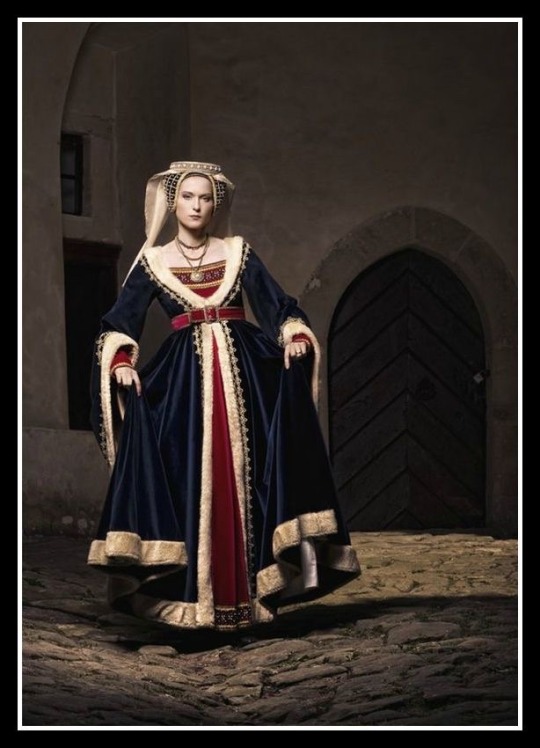
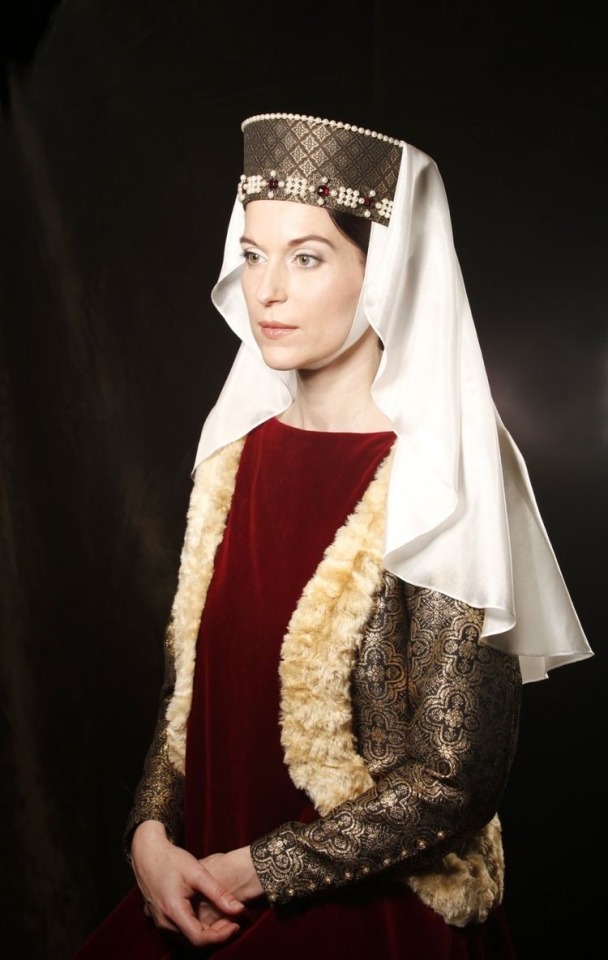
Marriage is when a girl becomes a woman, so in my mind in the Vale, a brides wedding day is when she starts to cover her hair. Bc covering your hair from the winds of the Vale is for noble wives who have duties to attend to and no time to fuss over trivial things. Letting your hair down and be tangled and caught is for silly little girls who don’t have any responsibilities. Essentially a rite of passage. I also think that a leftover from when the Vale was only made up of mountain clans is the gifting of a fur to the bride that the groom hunted himself. It used to mean that the man could provide for his new wife but now it’s an old tradition where a man may or may not hunt the animal himself. And it’s another tradition for the woman to use the fur in her bridal gown and for a swaddle for her future children
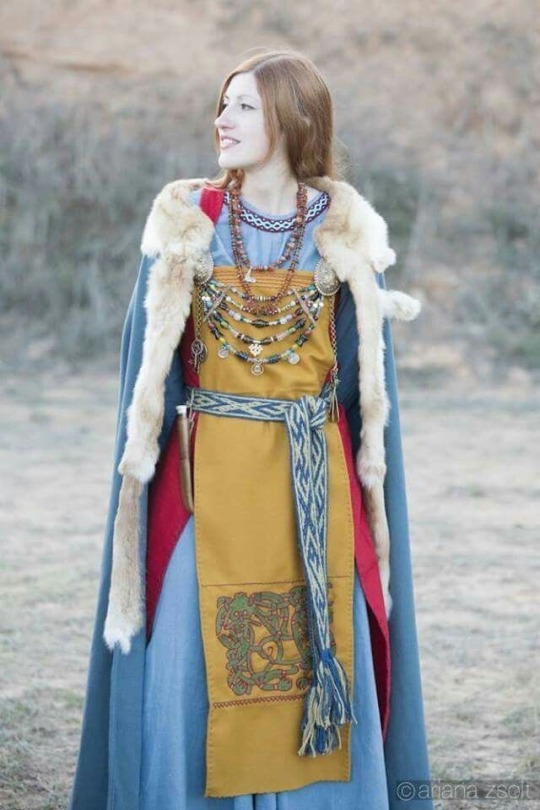
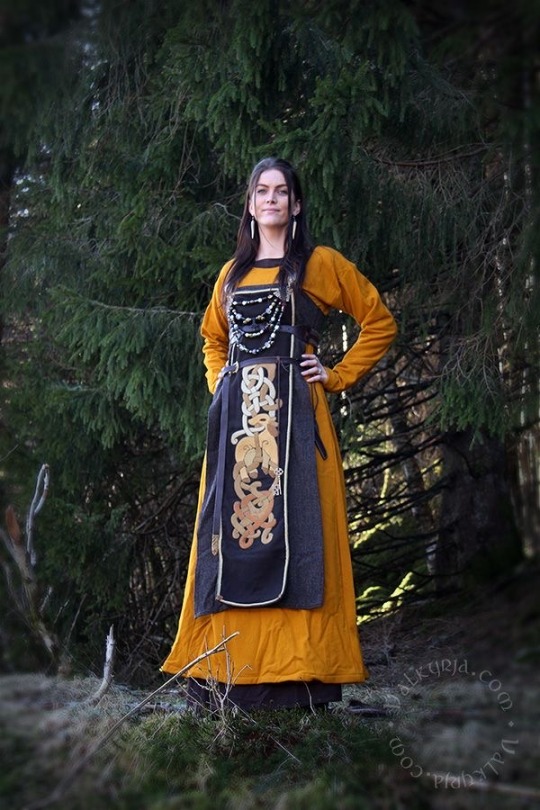
Marriage for an iron islander woman is particularly important because it’s one of the few instances where she can wear bright colors and pretty things without being ridiculed. She’ll wear her house colors instead of her husbands bc her fathers pride comes first ofc. A bride and her female relatives will probably make their jewelry for the wedding, protecting the bride with prayers to the drowned god carved into beads and bracelets. And any metal she might wear comes from her fathers stash, anything he paid the iron price for and wants to show off on his daughter. It’s part of her dowry too, so for a man to give away a particularly flashy piece of loot is considered very rich behavior


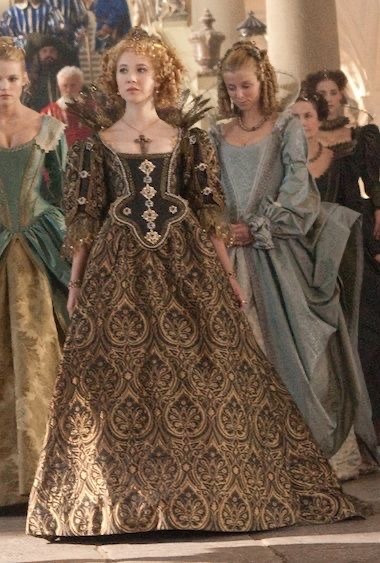
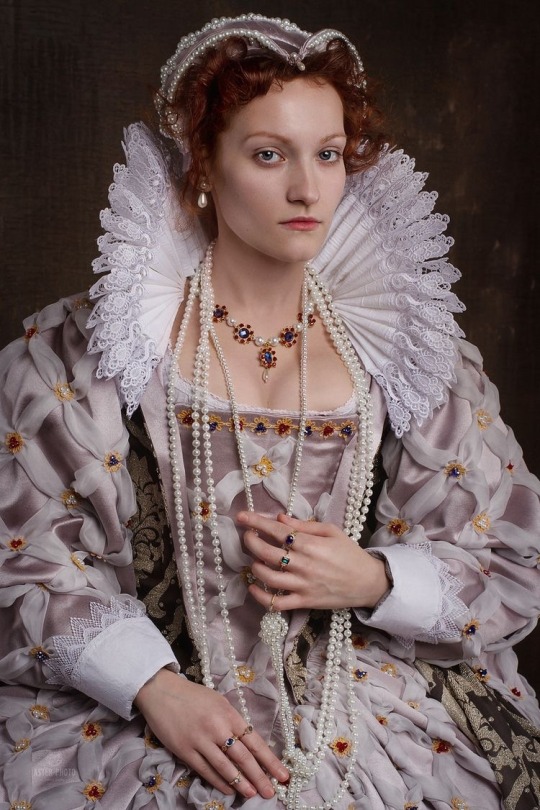
And ofc Kings Landing is a conglomerate of basically everything. Obviously westerlands style is currently the most popular and influential, but there are still fashions from all over the seven kingdoms and beyond being incorporated into weddings. What a woman wears all depends on her age, her homeland, whether or not she adheres to traditions, how modest she is, how rich she is, etc etc etc you get the gist. But rest assured it’s usually going to be over the top
287 notes
·
View notes
Text
Naruto Modern AU/Hollywood pt.1 - The Uchiha Family & Sasuke.
All types of reasons have led certain people to the level/status of celebrity. We will explore it in this Modern AU of Naruto. Oh yes, starting a new project (regardless of all the stuff in the drafts) as a means to share my lore and practice digital art.

They are your typical influential family/lineage/clan in the world of celebrity-dom and Hollywood. Taking their root foundation in Madara Uchiha who made a lot of money exploiting the land’s abundant minerals along with Hashirama Senju when they created Konoha. He built the foundation block of the Country’s central bank and police department. Yes, Madara lost most of his wealth through the years to the sin of gambling and failed business ventures. To this point of being a historical comedic fact of the past, his descendant Fugaku Uchiha had to rebrand and start with a "fresh foot" in a different industry; Technology & Scientific Lobbying/Investing. Along with ownership in the industrial prison complex but he’s not telling you the second part.

Finances magazine "The Ryô Treasury" loves to paint Fugaku as a self-made businessman who worked hard and won the investment lottery. These types of publications love to omit to the public the fact that anyone in the Uchiha clan born after Madara is technically a trust fund kid/nepo baby. Fugaku included since like most of his close and distant relatives were born into the higher class regardless of the money Madara lost throughout the years.
Many historians and the media do their best to conceal the depth of the influence Madara had on the country of fire and cover it up with the "billionaire gone broke" narrative because he had controversial political and social views that led to his fall apart from Hashirama Senju centuries ago.

Many industries go to the higher clans like the Hyuuga, Uchiha, Aburame & Senju for funding since they own a lot of the country’s resources and various entities. It’s hard to tell because it is well concealed on purpose like how the cheap wine you buy at the grocery store comes from a vineyard owned by a Senju who operates under a different surname.
With all that status and money, Fugaku married Mikoto (from an unknown background) and created the main and most popular unit of his clan with his two sons: Itachi and Sasuke.
Let’s Start with Sasuke:

He lived, along with his older brother, the typical luxury childhood with a large main mansion, a cottage summer home in France, maids, going to a 7-star school no one can find on Google Maps &, etc. The intense security of such a sheltered childhood created a rebellious fire in him. So, out of the blue at 18yo packed his bags and left his parents' house without warning. He settled on the rough side in the major city of Konoha to reinvent himself. After discarding his surname and blow-drying his hair, he dived into one of his hidden passions; music. With his dad’s funds, purchased a few guitars and started to compose music. Not only for pure love for the art form but in the hope of making a name for himself, to stand on his own feet and not hide in his brother’s shadow anymore. The fact that Itachi’s career was taking off around that time was pocking at his justified sibling inferiority complex (but he’ll never admit it).
After many trials and errors, he was able to befriend a few people while still refusing to disclose his identity. Like a random young guitarist coming up from the struggle, he created the punk rock band Taka along with Suigetsu (2nd guitar), Karin (bass), and Juugo (drums). They went from performing in small clubs to selling out large venues and becoming the most recognizable punk rock figure of their era and sending them on tours across different cities and countries.

Keep in mind they were able to pierce the market in Iwagakure due to the large rock music scene bringing a new sound standing out from the traditional heavy metal of the country of stone. They couldn’t say the same about other large cities like Sunagakure and Kumogakure who were at that time close to the outside musical influences until recently.
Sasuke took pride in his achievements accomplished without his father’s connections. The band was extremely popular among teens and young adults for their good music, edgy aesthetic, and participation in the punk/emo subculture.

Let’s not lie, a lot of their female fanbase was in love with the handsome lead singer Sasuke. He was an iconic punk/emo fashion icon for his legendary smoky under-eye makeup and spiky hair. All the members rocked some type of spiky haircut as well who were immensely popular at the time. Regardless of the focus on Sasuke, many of their fans love Suigetsu with his unique looks, great sense of humor, and certified crowd-hyping skills. Karin, the one and only e-girl punk girly, and Juugo, the sweet muscular teddy bear drummer who composed a lot of the band’s songs along with Sasuke. Their sound is akin to Red Jumpsuit Apparatus’s Don’t You Fake It and early day Paramore.
youtube
youtube
Unfortunately, the band disbanded 5 years later for many reasons. First, punk rock’s popularity fell by the wayside and was outshined by rap & hip hop from Kumo (this era was short-lived). Also, Sasuke realized that all the members were growing apart in different ventures for their lives:
- Sasuke: By mistake, his family name was discovered. Somehow, he avoided the fraud accusation but realized he didn’t want to be a singer all his life. He outgrew it Also his father finally reached out to him and promised to guarantee his son’s future career venture if he came back so they could play into the "influential family" unit image Fukagu wanted to create (think of the Kardashians). Being interested in modeling, Sasuke complied.
- Suigetsu: Always wanted to do something in his hometown (Kiri). He kind of went off the spotlight, rumors say he is working with artists from Kiri and is a DJ wearing a full-face helmet, so we might never know…
- Juugo: Always known he had a talent and passion for photography, so he pursued it as a career. After putting a few portfolios out here, he was recruited by the renowned fashion, designer Orochimaru and it’s in his circles where he met A-List fashion model, Kimimaro. They are now engaged.
- Karin: She is now a bass and guitar instructor at the most prestigious music Academy in Konoha. The breakup was tougher on her for many reasons but the fact that Sasuke started dating and is now married to the professional wrestler and fitness influencer Sakura Haruno played a huge role in it at the time but she’s now comfortable with their relationship, and she became the godmother of his daughter.
All these things happening at the same time made the disbandment a little smoother to digest for them but was a huge shock for their fans.

Sasuke is now a model operating under Orochimaru. His handsome looks, talent, and father’s connections allowed him to make a name for himself. He keeps lending juicy contracts left and right. For some reason, he has regained pride in his family name and wears it publicly. Despite his efforts, he is back to being the Young brother in his parents’ eyes, but he doesn’t care anymore. Him and Itachi are 2 distinct entities at this point and get rarely mentioned together in most professional settings.
Sasuke is now busy and married with a daughter named Sarada. He can’t let these ideas get to him since he has a relatively good public image and enjoys his privacy (he doesn’t share too much about himself or his family with the public). He has blatant rudeness towards paparazzi, interviewers, and anyone talking to him. Pretty privilege allows him to be labeled as an introvert and keep it pushing.
next part
#naruto#naruto modern au#naruto au#naruto fanart#naruto headcanons#naruto imagines#my art#sasuke uchiha#itachi uchiha#sakura haruno#sakura uchiha#uchiha clan#fugaku uchiha#madara uchiha#uchiha itachi#uchiha brothers#team taka#uchiha sasuke#naruto shippuden#naruto art#hashirama senju#mikoto uchiha#hollywood au#celebrity au#IM BACK#sarada uchiha#suigetsu hozuki#karin uzumaki#juugo#taka
46 notes
·
View notes
Text
A layman's guide to olympic fencing—
for writers, artists, olympic fans, or the otherwise curious.

disclaimer: i say layman for a reason! i'm not at all a professional, or even good, but i have been fencing (very) recreationally at an amateur level for ~7 years. also, my exposure to sabre is extremely limited, and i am speaking from an american POV, so please feel free to correct me on any points you see necessary. :)
long post incoming...
So, what is "Olympic fencing?"
First and foremost, it is a sport. Not a fight, not a duel—a sport. One of five that have been permanent fixtures since the very first modern Olympic games, actually—hence the name! While other similar sword-wielding activities (such as historical European martial arts (HEMA), kendo, or wushu for example) may occasionally be referred to as "fencing," most people (me included) define fencing as this specific sport, and use other classifiers to categorize the rest.
Originally, fencing began as a form of military training in Germany and Italy, before spreading recreationally across more areas in Europe. Currently, the fencing scene is almost uncontestedly dominated by Italy, France, and Hungary, though both China/HK and the US have had some pretty stellar wins more recently.
In addition, French has a pretty large influence on fencing terminology and language, at least in the West. Be prepared!
The Basics
Three Weapons
Fencing is divided into three disciplines, each with their own equipment, strategies, and ruleset. They are as follows:
Épée: The classic. The heaviest and most defensive of the three blades, épée's simple ruleset allows for more elaborate strategy and really lives up to fencing's moniker of "physical chess." In épée, the entirety of your opponents body (including face, toes, etc!) counts as valid target area and all hits must be scored with the tip of the blade. In case of a double-touch (relatively simultaneous hits from both opponents), both opponents score points.
Because there's no need for specific target areas, épéeists enjoy minimal equipment, forgoing lamés (electric jackets, pronounced luh-may) and mask cords in exchange for a larger bell guard to protect the hand (that big bit of metal at the end of the blade). Épéeists can use pistol grips for more point control (molded to fit a hand), or a french grip to get a little bit of extra distance (red stick grip).
Épée bouts are stereotypically known for being slow and boring, since the absence of right-of-way (explained later) allows more freedom in trying to sus out opponent reactions and strategize, and the whole-body target + double-touch system means there's more benefit to fencing slowly in comparison to sabre or foil. It's not uncommon for épée bouts to begin with both fencers being carded for passivity! There's a lot of bouncing back and forth in the middle.
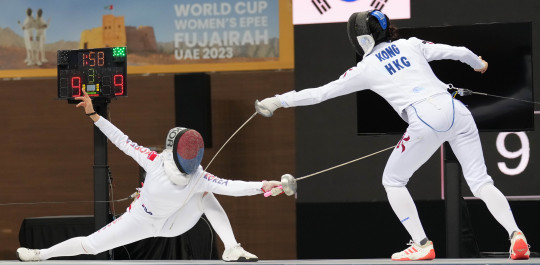
Saber (Sabre): Fast, slashing, and aggressive. The fencing you see in movies? Sabre. It's the only cutting weapon, where the entire length of the blade is able to register contact with the opponent. In sabre, the target area is the upper half of the body (including the face, but excluding the hand) and their lamés reflect that. Sabre also employs what is known as right-of-way/priority/advantage (from here on abbreviated as RoW) which, in the case of a double-touch, essentially gives RoW—and therefore the point—to the "aggressing" fencer at the referee's discretion. RoW is pretty complicated, but is very influential in how both sabre and foil play out.
In their ready (en garde) position, sabreists also hold their blade vertically to protect the face (as opposed to foil and épée, where the blade is held horizontally to keep the point towards the opponent). Sabreists also need special masks to register hits, as well as a mask cord to connect it to the rest of the electric circuit. Sabre bell guards are kinda swoopy and extend downward (think pirates) and are always "french grips" (aka just a stick).
Sabreists are generally known for being (respectfully) batshit insane and dramatic as hell. Bouts are extremely fast (rarely more than a few seconds) and look simple, and rely much more on pure athleticism and fast reaction times than épée. Most bouts consist of the two fencers running towards each other, maybe a parry or two, then both fencers scoring hits with a fair bit of screaming and angrily pointing at the ref. Oh wait, did I say running? Sorry, I meant advancing, since sabre is also the only discipline where crossing-over with your legs got banned because people just started sprinting towards the middle instead of actually fencing. Love them for that.
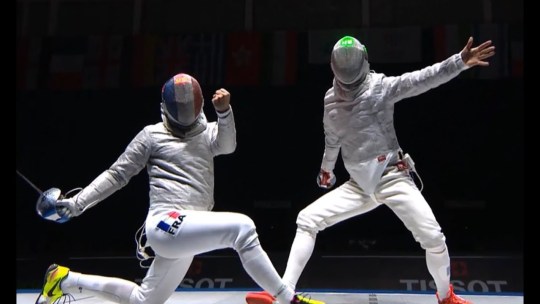
Foil (Fleuret, rarely): Oh, foil. The artistic middleman. Originating as a practice weapon, foil tends to sit in the middle of épée's careful point-control and elaborate strategy and sabre's split-second reactions and fuck-it-we-ball energy. Yet somehow, it ends up being more nit-picky and complicated than both. It has the smallest target area of the three, only covering the torso, as well as the lightest blade. Touches are only registered from the tip.
RoW's influence is noticeably large, since, compared to sabre, the longer bout times actually allow for opportunity for RoW to be traded between you and your opponent. Foil can almost be thought of as turn-based combat. Fencer A initiates the attack first, now has RoW, lunges and misses, which gives RoW to Fencer B. Fencer B attacks, gets parried (back to Fencer A), A extends, B counterattacks, A gets the point.
Foil stereotypes aren't as strong as épée or sabre stereotypes, but foilists are generally known for either being super pedantic and arguing w/ the ref about RoW or whipping their blade around constantly & being flowery (hence, "fleuret"). Because of how bendy the foil is, foilists can also do cool stuff like flicks (snapping your wrist so that the blade bends around, oftentimes to hit your opponents back) and can also get into pretty funny in-fighting situations a bit more often than sabre/épée (since corps-a-corps contact isn't allowed in fencing, and stepping back means you lose RoW, there's a lot of awkward up-close poking).
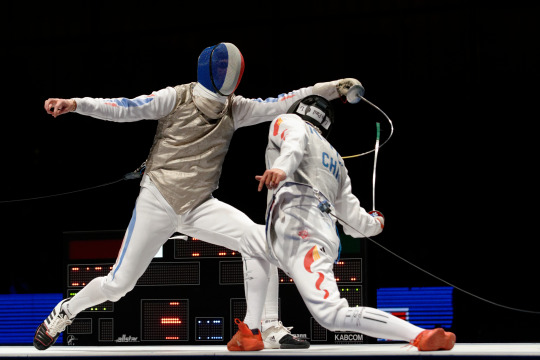
Some Positions
En garde: the basic fencing position. In essence, a squat, with one foot facing forward and the other turned out, roughly one and a half foot-lengths apart. This is the basis from which all other movements—the lunge, the advance, the retreat—should be executed, and the position fencers return to once an action is completed.
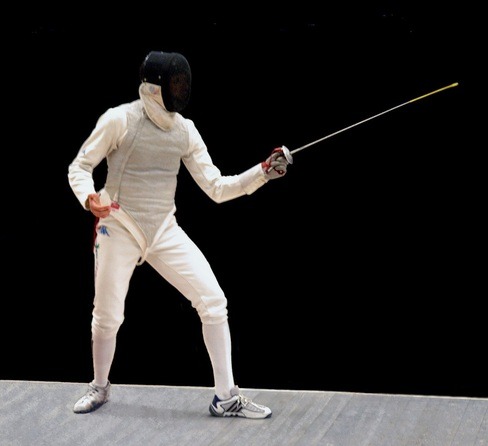
Lunge: the quintessential fencing attack. From en garde, extend your dominant arm, kick out your front foot, land forward, and extend your back arm for balance. To recover, bend your back leg and return to en garde.

Parry: the most basic piece of defensive bladework that every fencer learns, with the "beat" serving as its offensive counterpart. Consists of hitting your opponents blade to prevent a touch. There are nine different parries in classical fencing, but the most common (in foil/épée) are the four and six, which defend the inside and outside lines respectively.

Ettiquette & Other Fun Facts
All fencers must salute their opponent, referee, and audience (if there is one) before and after the bout. Usually just consists of "nodding" at the salutee with your blade before the mask is donned. At the end of bouts, a handshake with your opponent using your non-dominant hand is also expected. Many people substitute/add on to the handshake by tapping blades instead.
Unlike in tennis, seeing a fencer hold up a one on their hand after a touch is an acknowledgement of the opponent's point, whereas a closed fist is a claim of theirs.
When fencing without a ref, many people will slap their thigh to indicate the start of a bout.
Fencers may not speak while the mask is on.
Fencing clubs are also sometimes called salles.
While electrical equipment can vary between disciplines, all fencers are required to wear knickers, a plastron (under-arm protector), a body cord, a jacket, a glove, and a mask. For women, a plastic chest protector is also required. In sabre and foil, fencers also wear a mask cord and lamé.
The first safety rule most fencers learn is to never raise your blade towards someone without a mask on, and it's taken pretty seriously. Because the back of a mask is exposed, its also a big big no-no to turn your back to your opponent during a bout or otherwise lower your head.
Common Terminology
En garde, prez, allez! - On guard, ready, fence! Used to signal the start of a bout.
Halt! - Said by referees to. halt the bout.
Strip/piste - The surface on which fencers fence. Usually around 2m wide and 14m long, the lines on the piste also dictate where fencers must move to to begin bouts, and where they're considered out-of-bounds. Sometimes, they're on raised platforms. Yes, people have fallen off, yes, it's extremely funny.
Feint - Probably what you think it is.
Disengage - Moving your blade in a little circle to avoid contact with what is usually an incoming parry/beat. On a very basic level, straight attacks beat disengages, disengages beat parries, and parries beat straight attacks.
Fleche - An explosive running attack. Due to not being able to cross-over, sabreists use "flunges" instead, a mix between a fleche and a lunge that essentially entails flinging yourself at your opponent in a flying lunge.
Balestra - hop :)
Riposte - An immediate attack done after a defender's parry. Usually heard as "parry-riposte."
Tempo - A kind of nebulous concept, but very similar to the musical definition of the word. The pace of a bout, sorta. Often used when someone is advised to break tempo or if one fencer is controlling the tempo of a bout.
FAQ
Why are the blades bendy? To keep us from dying, mainly. What, you want the metal pole people can throw at each other at the same speed as a bullet (literally) to be solid? Also, blades break a lot already, especially in the hands of the inexperienced—they'd snap a hell of a lot more if they weren't flexible. Ouch.
Does it hurt? About as much as getting poked really hard with a steel stick would. Leaves bruises often, but cuts very rarely. You get used to it. The real kicker is staying in en garde for that long. Trust me, your quads will be screaming.
Is it- No, it's not dangerous. If you follow the rules, fencing is actually extremely safe, especially compared to contact sports.
Does a red light mean no touch? No. One fencer is assigned a red light that lights up whenever a touch is made, and the other is given green. In sabre and foil, yellow (sometimes white) means whatever the fencer hit was off-target, and should not be counted as a point. Épée doesn't have an off-target light, since épéeists don't wear lamés.
How do the masks know when a point is scored? Often asked upon seeing the little lights on the side of masks light up upon touches. Unless you're "dry fencing" (no electricity), you're typically hooked up to a circuit. If you fence épée or foil, there's a little button on the end of your blade that registers when pressure is added onto it. When a hit is scored, the signal goes through the wire in your blade, up your body cord, and eventually to "the box" (and your mask if you're fancy), and the corresponding light is flashed.
Why hold your hand behind your back? Most people don't! Some beginners do it to prevent themselves from reflexively moving their non-gloved hand in front of them when being attacked (which is against the rules), but most fencers either keep their hand relaxed at their side, raised in a t-rex pose, or occasionally above the head.
Helmet? Mask.
Sword? If you want.
Touché? Often "touche," actually. No accent.
Paralympics? On (stationary) wheelchairs. Extremely cool, actually, and very hard. Check it out!
Expensive? To get all your own stuff? Yes. But most clubs will rent you equipment, or sometimes lend it for free! But yes, more expensive than, like, soccer. :(.
Is it fun? Absolutely. To quote some random internet user, "it's like chess, at 90 miles an hour, oh and there's swords!" I would 100% recommend it to everyone, especially if you're on the older side (fencing isn't super age-restricted at all—seeing a 12 y/o and a 70 y/o facing off on a club piste isn't uncommon!) It is exhausting, exhilarating, and super, super fun. Give it a shot!
.
Please feel free to send any and all questions, corrections, or musings my way. Thanks for reading—I hope this was interesting and/or useful!
23 notes
·
View notes
Text

Portrait of Vivienne Westwood by Christian Shambenait
It took me a few days, but with the death of icon-goddess-genius Vivienne Westwood, I had to make a post here about her work and how massively influential she was during her lifetime, and why her influence will remain for years to come.
"I take something from the past that has a sort of vitality that has never been exploited – like the crinoline – and get very intense. In the end you do something original because you overlay your own ideas." Vivienne Westwood
Born in 1941 in Tintwistle, Cheshire, Vivienne Westwood (nèe Swire) did not have a "traditional" path into fashion and design, even though she took a course of jewellery at the Harrow Art School (she thought it was not for her, being a working-class girl), she became a primary school teacher and got married with Derek Westwood, had a kid... But she was a maker of things and a creative mind, and made her own wedding dress and jewellery that she sold at a stall.

Malcolm McLaren and Vivienne Westwood at the Let It Rock store (London, January 1972).
But all of that was about to change when she met Malcolm McLaren. She got divorced, moved with him and had another son. McLaren became the manager of the Sex Pistols and with Westwood, they became a creative duo who dressed the band and became VERY influential during th punk era. We must add the after that they opened a store called SEX, which was the meeting place for the punk scene in London in the 1970s. So, yeah. punk wouldn't look like it does without Vivienne Westwood.
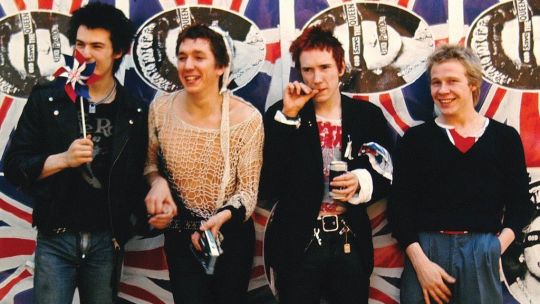
"Vivienne and Malcolm use clothes to shock, irritate and provoke a reaction but also to inspire change. Mohair jumpers, knitted on big needles, so loosely that you can see all the way through them, T-shirts slashed and written on by hand, seams and labels on the outside, showing the construction of the piece; these attitudes are reflected in the music we make. It's OK to not be perfect, to show the workings of your life and your mind in your songs and your clothes." Viv Albertine
This era of Westwood's design has a lot of collaboration, especially with McLaren, and they produced under the Worlds End label until 1985. These collections have each a theme and a name, and here is when we star seeing Vivienne Westwood's eye and curiosity for historical fashion, as well as nods and details especially from the 18th and 19th centuries. Of course, it was the 80s and all was way more colourful than what we thing of more contemporary Vivienne Westwood, but you can see that EVERYTHING was already there in the period which she dubbed as "New Romantic" with collections like Witches, Punkature, and Pirate.
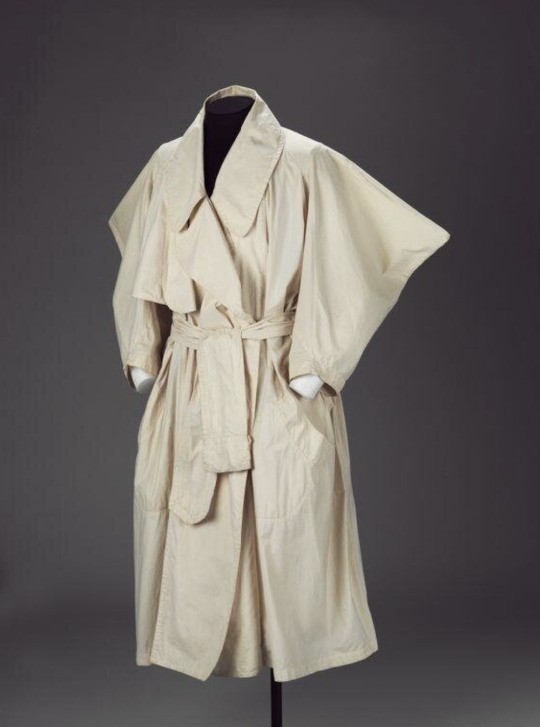
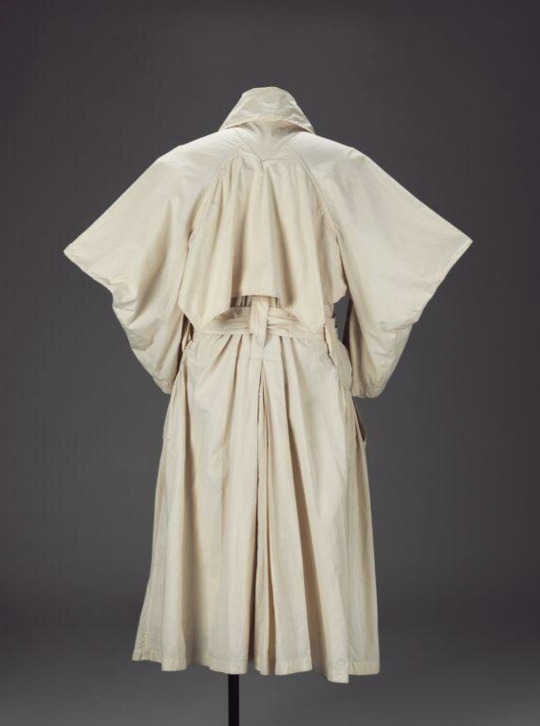
Raincoat and belt, from the 1983 Witches collection, Victoria & Albert Museum.

Ensemble from the 1982 Pirates collection, Victoria & Albert Museum.
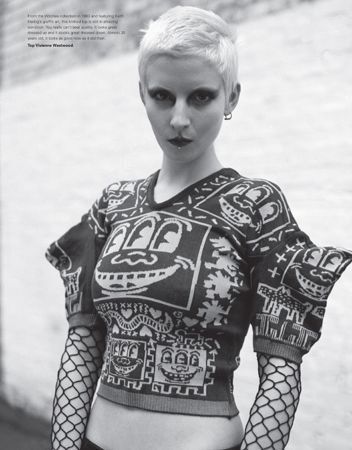
Knitted top from the 1983 Witches collection, featuring Keith Haring's graffiti.
The 1988-1991 era is called "The Pagan Years", and we can see the change of the main looks from punks to girls in clothes that parodied the upper class. And it is then that I think the ultimate Vivienne Westwood is seen: corsets, crinolines, tartan, colourful stripes... Here is when we begin to see the historical references taken to a extreme, mixed with the modern word and sense of humour, while always being perfectly made and patterned and fun for all genders.
Here some of my favourite ones:
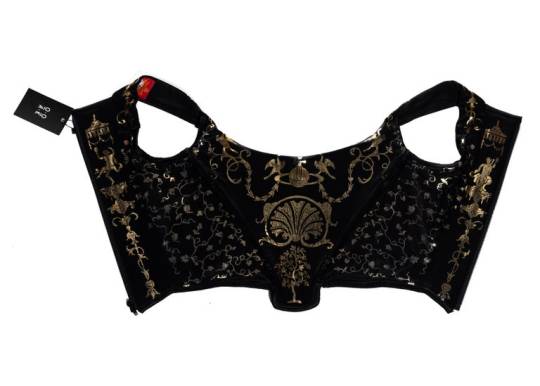
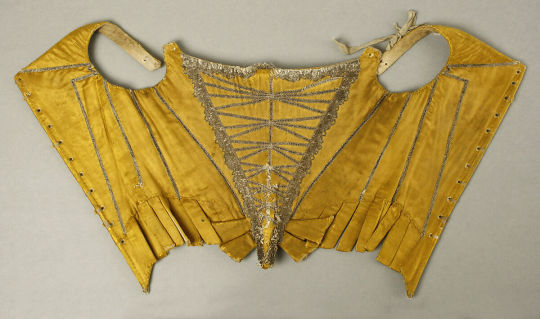
Vivienne Westwood black satin corset with metallic gold pattern, ss 1992 Stays, late 17th-early 18th century, Met Museum.

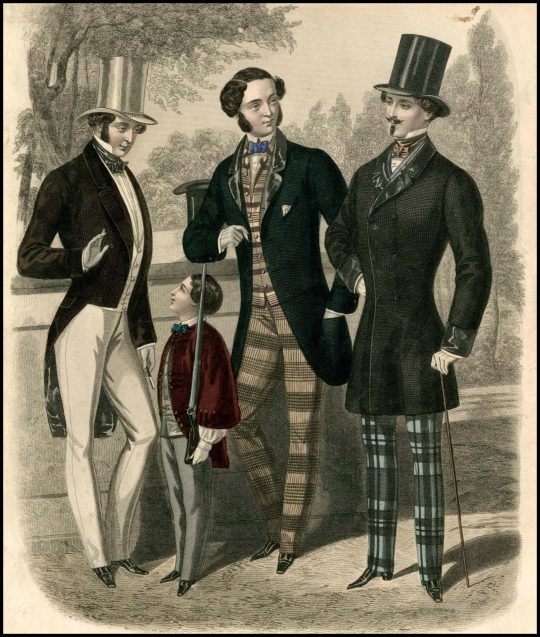
Vivienne Westwood autumn/winter 2020.
Fashion illustration on L’Elegant, 1853.

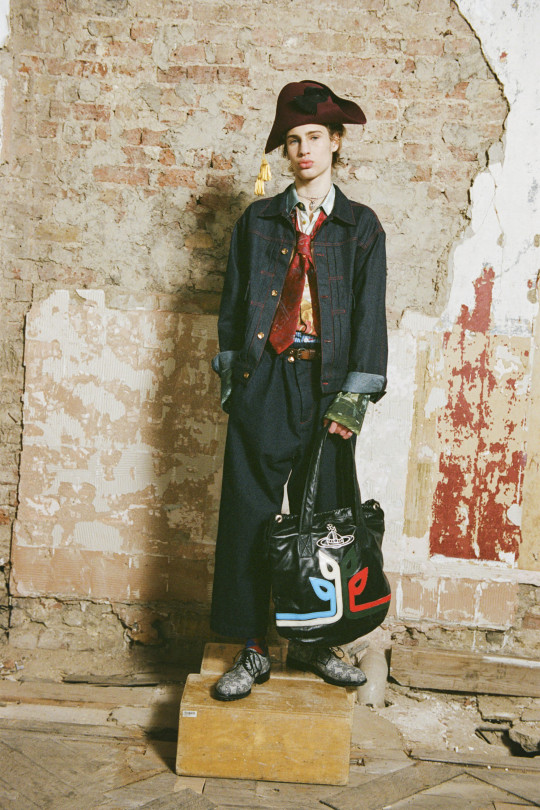
Carmagnole Jacket, France, c. 1790 / Sans-culotte Trousers, France, c. 1790, Los Angeles County Museum of Art.
Vivienne Westwood, autumn/winter 2021.
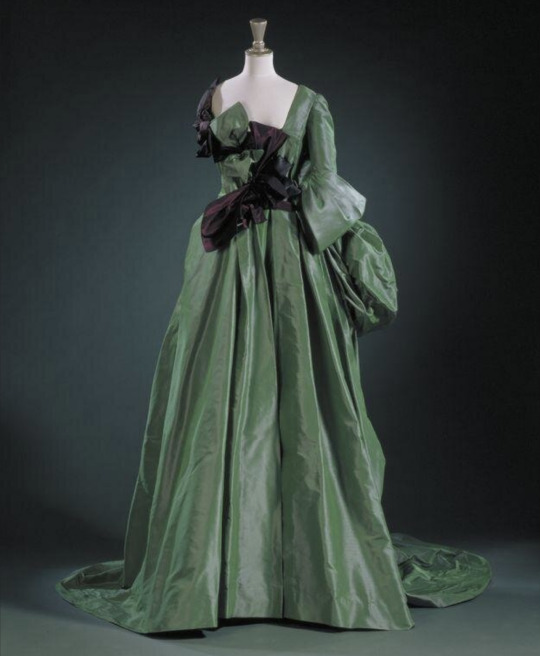


"Watteau" evening dress, 1996, Vivienne Westwood, Victoria & Albert Museum. "L’enseigne de Gersaint" (detail), Jean-Antoine Watteau.
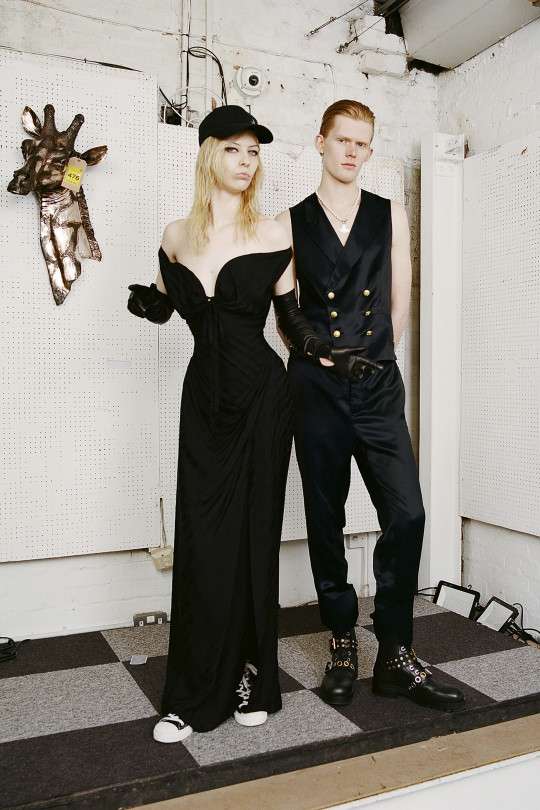

Vivienne Westwood, autumn/winter 2022.
Portrait of Madame X, 1884, John Singer Sargent.
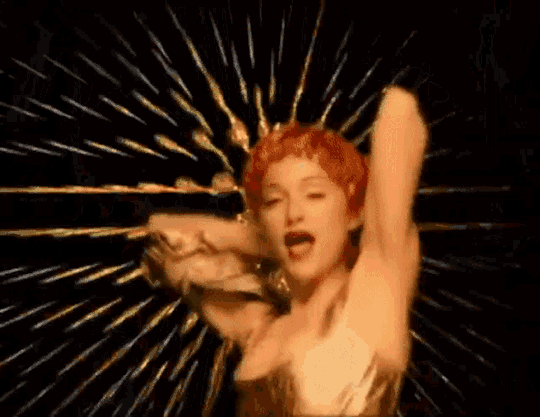

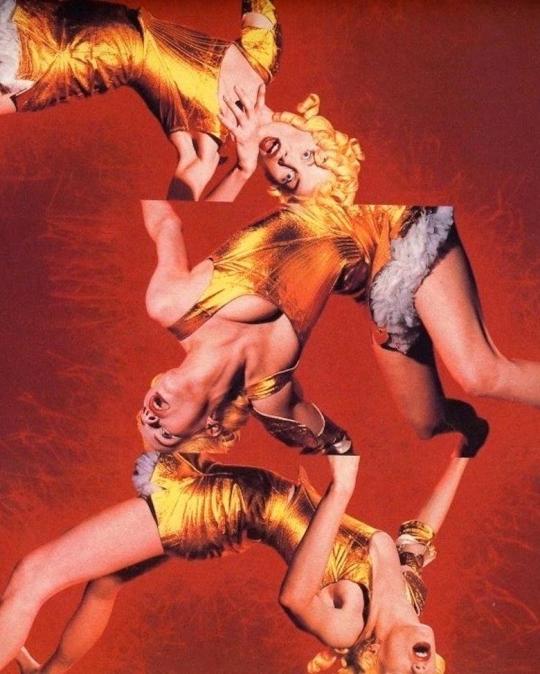
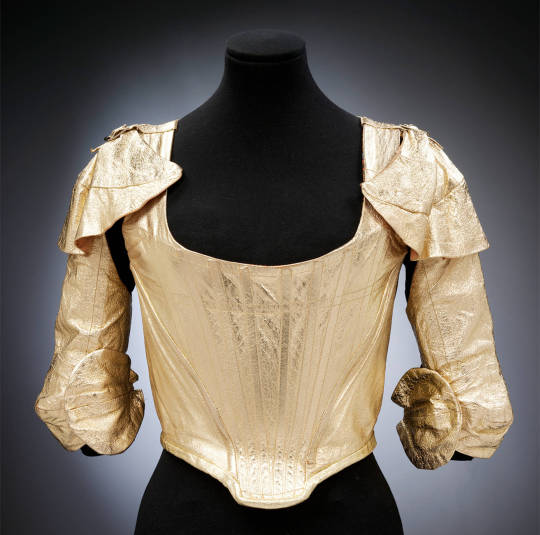
Madonna in her Fever video, 1993, wearing Vivienne Westwood. Gold leather corset, sleeves and mini skirt, 'Time Machine' ss 1988, Vivienne Westwood.
Always a creative force and a punk at heart, Vivienne Westwood was also an activist, putting front and center important causes like climate change, or sustainability and transparency in the brand's supply chain.
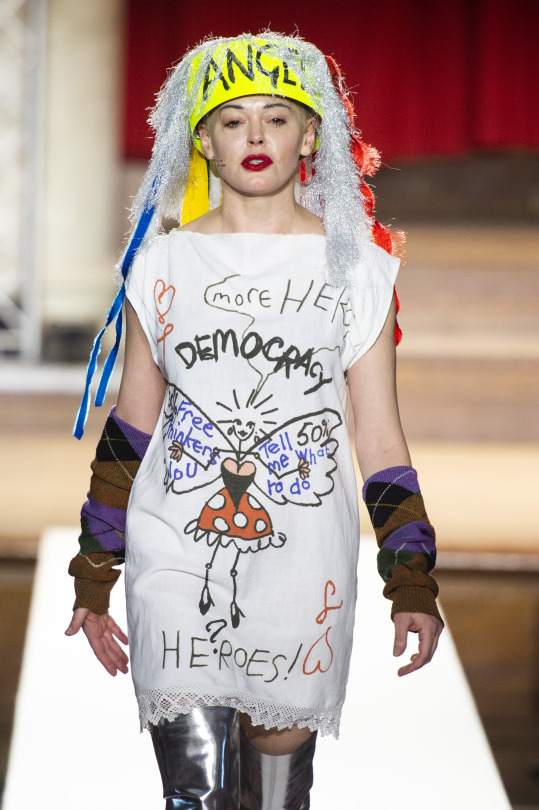
Rose McGowan walking the autumn/winter 2019 Vivienne Westwood catwalk.

Designer Vivienne Westwood looks through the glass toward the media during a photocall at a retrospective exhibition to celebrate her 30 years in the fashion industry, at the Victoria and Albert Museum in London, Tuesday March 30, 2004.
What is your favourite look/garment of this iconic designer? And does it have an historical reference? Let us all know!
203 notes
·
View notes
Note
black metal 🎶 counter-attack!
black metal is one of my favorite genres. screams and tremolos just rub my brain the right way for whatever reason, i love them outside of black metal too (tho i can be picky with vocals especially). plus it's the faggiest subgenre of extreme metal - how many death metal bands would name a song some shit like "Tears of a Melancholic Vampyre"? it's got a lot of theatrical elements, and I tend to judge black metal albums by their overall vibe along with the music.

before i get into the recs, famously and unfortunately, a lot of people in black metal suck in a lot of ways. i generally don't worry too much about this because i'm pirating most of it anyway, but i've checked these ones out and as far as i can tell, none of them suck in any especially bad ways. with that out of the way here are some favorites of mine:
Spectral Wound - Frigid and Spellbound - melodic but uncompromising black metal that sticks within the classic vein, particularly influenced by Gorgoroth and the Finnish scene. one of the few black metal bands with good lyrics, inspirations including Walter Benjamin, Ingmar Bergman, Giorgio Agamben, and Kate Bush. this song is their catchiest, with some really good melodic riffs. no left theorists show up directly within its lyrics, which are instead about the beauty of a frozen river, and a Grindr hookup ("Come to me anon/Deranged and defiled/Twisting in dark passions/Of the cruel nauseous hours").
Mortuary Drape - Not Still Born (The Unborn Plane) - founded in the late 80s, this Italian band is one of the best of the "first wave" of black metal, from when it was all sort of a soup of black/death/whatever. they're influenced by occult rock and their sound predates the Norwegian codification of the standard black metal style, so they're light on the blast beats, tremolo riffs, and Satanism and heavy on the bass, necromancy, and occultism. though not nearly as influential as Bathory or Celtic Frost, they've inspired a decent few bands in their own right. this one's about getting reincarnated.
Yaotl Mictlan - Nada Verde Crece Aquí - one of the first songs that got me into the genre, and still a favorite. melodic folk/black metal which makes good use of some indigenous flutes, not a lot of blast beats. lyrics are derived from one of the Nahuatl flower-songs of Nezahuacoyotl, about the impermanence of all things on earth.
Paysage d'Hiver - Welt Aus Eis - the most common word used to describe Paysage d'Hiver is "cold". it's stark and minimal, riding the line between atmospheric and ambient, and barely produced: i once saw someone complaining about being able to distinguish the instruments on a newer album of theirs (or should I say his? it's a one-man project). these days, i get it. everything in this song blends together into an entrancing whole, only broken by snatches of croaking and cackling carried on a freezing wind, and (twice) a beautifully dissonant violin. the lyrics are never comprehensible or transcribed, but conceptually it's about winter and a mysterious spiritual journey, as all their songs are.
Deafheaven - Dream House - You already know this song. It's really good! Takes some of the musical elements of black metal, reconfigures others (more complex drumming, different sorts of melodies in the riffs), and completely changes the aesthetics while still keeping a coherent vibe overall.
Odz Manouk - To Feast on Celestial Bodies - the (one-man) band's name is Armenian for "Snake Child", from a folk tale about a royal couple whose baby was born a serpent. hypnotic dissonant riffs, harsh but clear vocals (with an interesting sort of singing at times), production that's neither too raw nor too clean. super cool song title also. if you go deeper into their music, the split with Tuukaria is not to be missed.
Negative Plane - Angels of Veiled Bone - one of the bands inspired by Mortuary Drape, they take the occult sound and bring it closer to modern black metal while adding a ton of reverb for atmosphere. the vocalist is really good at putting emphasis on the right points in the lyrics, which makes the vocals much more memorable than the average amorphous harsh vox. members' side projects Funereal Presence and Occultation are also excellent.
Iron Firmament - Keepeater - the production on this EP is so bad that the drums mostly just sound like a strobing effect on the rest of the instruments, which is honestly really cool. they've got some more EPs which lose that effect for better or worse. this song is - as you might expect - about covering the sky with iron plates, and a giant serpent that eats castles. i can't make out enough lyrics to tell how those two themes are related.
Gevurah - Dies Irae Lacrimosa - Gevurah are insanely pretentious "orthodox" Satanists (they worship Satan as a literal god, not a symbol of human will or whatever). their theology is some sort of Gnostic anti-cosmic occult shit, which as it turns out makes for really fucking sick black metal. the drums are doing a lot here but the real highlight to me is the boiling tremolo riff that starts a minute in (and gets brought back later with a vengeance). there's one part when it's just the vocalist shouting in a Quebec accent that pushes the cheese factor a bit too far, but the rest is really great.
#music#black metal#spectral wound#yaotl mictlan#mortuary drape#paysage d'hiver#deafheaven#odz manouk#negative plane#iron firmament#gevurah
4 notes
·
View notes
Note
I'm a bit annoyed that people are somehow mad at historical costumers/dress history enthusiasts in the "actresses being forced to wear unrealistically restrictive corsets" situation. Like, yes, the knee-jerk reaction of "THE EFF DID YOU SAY ABOUT CORSETS?!?!" is unbecoming, and I've been guilty of indulging in it myself. But this time, I've seen a large number of people in the community- influential people, like the creators behind RedThreaded and Prior Attire -expressing anger not that Corsets Are Being Slandered, but that abusive studios hide behind a false perception of "historical accuracy" to justify torturing actresses.
To me, as a dress history researcher, the idea of banning corsets rather than simply getting the actresses corsets that fit isn't enraging because it's Corset LibelTM. It's enraging because this particular twisting of the past is being used to normalize unsafe/unhealthy working conditions, and to shift the blame off the real culprits.
I totally agree with you. As indisputably bad as it was for that one tumblr user to claim that it’s “white feminism” to say that a corset can be uncomfortable, I’ve seen a lot of people coming from the other side making an identical mistake to that person by assuming that ill-fitting corsets used in a modern film production (because the health and safety of the actresses are disregarded) “say” anything about corsets/stays worn by the vast majority of women in the past, or vice versa. The people making these movies generally don’t give a shit about historical accuracy, and even the costubers with the worst takes are not actually subjecting actresses to this treatment.
There’s been an unhelpful amount of straw-manning and overgeneralizing re: “the corset brigade,” where the most obnoxious opinions are attributed to anyone who says “it’s bad and stupid that this movie set in the Middle Ages has a tight-lacing scene” or “most of the negative outcomes you’re talking about are specific to late Victorian/Edwardian corsets, as worn by a segment of the people who wore corsets, and some of them are exaggerated.” Or mott-and-bailey, where you can’t say “corsets weren’t torture devices straight out of a death metal album cover from 1987” without someone going “oh, so you’re saying nobody ever found them uncomfortable”? Or assuming that anyone who cares about dress history cares nothing about any other kind of history. And then wondering why some people are overly defensive about corsets.
And, frankly, I don’t see the point, because I think most of us can agree it’s inherently bad for society to exert pressure on how women dress or look. (Beyond, I don’t know, requiring close-toed shoes in a lab or whatever.) A corset doesn’t have to cut women in half or even be uncomfortable for it to be bad that women had to wear them to be considered respectable.
Like, I don’t know. I shave my legs. I think it’s sexist bullshit that I’m expected to, but I’d still be annoyed if (in the miraculous event that it fell out of fashion) people in the future claimed that 25% of women in the 2020s died from blood loss or had to get their legs amputated due to leg-shaving. Or if a good chunk of historical films about female characters decided to address the sexism of today mainly by having the heroine wince and sigh while shaving her legs. “They criminalized miscarriages,” I (or my ghost?) would say, “and, even if you’re looking only at grooming expectations, there was a time when you were pitied and disdained if you didn’t wear foundation.”
#history#fashion#oh and don’t get me started on the no one actually needs to wear a bra strain of argument#I need to wear a bra if I’m doing anything but lounging!#because these things are huge#and no I would not rather get a breast reduction#can’t believe that people in real life have said that to me
27 notes
·
View notes
Text
Untrue - Burial
[Garage/Dubstep] [2007]

As was the case with early Dubstep, the sound of this album and the scene it came from is so distinctly working class, this pales in comparison to the scale and spectacle of post-Scary Monsters and Nice Sprites Dubstep.
My perspective on this album is from a 19 year old who's introduction to the genre came from Skrillex, Knife Party and Barely Alive in The Great Brostep Uprising of 2012. There is a massive divide between the old and new school sounds, discussions around which sometimes veer into snobbery.
This is not to put down modern Dubstep, every genre will inevitably evolve over time and this shift is directly responsible for the amplification of EDM for the casual music listener, whether you think that is good or bad, it was undeniably influential. Dubstep is far from commercial in recent years, the producers are creating simply out of love for the genre and scene which has led to innovative sound design and maddening rhythms. Some of my favourite modern artists are Sharks, Space Laces and Leotrix. There are plenty of artists today fitting the mould of old-school Dubstep and Garage: Eprom and G Jones for example, both of which take inspiration from D&B and Hardcore as well, even the new Skrillex record is a tasteful homage to the scene of UK bass music he was influenced by - we have come full circle.
The imagery and song titles on Untrue really speak for themselves - "In McDonalds", "Homeless", "Dog Shelter" and even the album cover signal to the listener a specific sense of normalcy and is based in the familiarities of the working man.
The intended listening environment for Untrue is for a slightly too long for comfort bus journey home in the dark, jacket hood up and headphones in, or waiting for your friend to meet you outside the corner shop, watching the raindrops be illuminated by the street lights.
The drums pattering away in "Ghost Hardware" are almost uncomfortably off-kilter, reminding me of "Gyroscope" off the album "Geogaddi" by Boards of Canada from one of the most terrifying albums I have listened to. Hypnotic vocal sampling of odd and very short sections remind me of XXYYXX's 2012 self titled debut of which Untrue was definitely an influence.
Upon researching this album, Burial said in in interview that he used the software Sound Forge to make the album. It is absolutely unreal to me that he managed to squeeze this work of art out of such a primitive and featureless software. Sound Forge is for audio editing, it doesn't feature any kind of sequencer or synthesizer. He produces sort of like an early Dub producer that used the analog mixing desk as an instrument. The fact that he had no grid to work with means the creation of this album was undoubtedly a painstaking process. But this means the drums have a unique swing to them. The reliance on waveforms over MIDI leads to some interesting sampling, pots and pans, rain ambience, vinyl noise, Metal Gear Solid soundtracks and SFX, synth demos and youtube covers.
Untrue is a prime example of how so much can be said with little words or even melodic content. The production itself sells the lonely, melancholic feeling. The emphasis on atmosphere and texture makes me wish for better intros and midsections in modern Dubstep.
All the "imperfections" of this album sell the experience, the click of the sub bass not stopping at the zero-crossing gives a similar effect as using vinyl noise. The title track "Untrue" is the highlight of this album for me, the powerful sub bass, the droning and creative sampling encompass everything I love about the album.
I remember reading a post on Twitter about trying to create an emotional mixdown and I didn't understand what they meant until I began listening to every choice this album makes, as an amateur music producer, I understand the perfectionist mentality so many producers have, endlessly obsessing over one thing that makes little difference until you zoom out to the big picture. My point being that EVERY production choice is intentional and essential to the emotion of the song which should not be understated in projects like these.
21 notes
·
View notes
Note
i am so curious to see if you know earth crisis/what you think of them lol
okay, fuck, you accidentally asked me about something i love to talk about. so, one of my favorite niche music scenes to talk about is the hardcore scene and what spun off and evolved out of it over the course of like the 80s, 90s, 00s and earth crisis occupies such an interesting space in that niche.
bc like when we talk about metalcore now, we're not really talking about bands like earth crisis. we say metalcore in a mainstream sense and people think like oh bad omens, or periphery, or underoath or whatever, right? the -core in modern metalcore basically indicates like breakdowns, but the -core being drawn from is actually more post-hardcore than it is actual hxc hardcore. right? (broadly speaking, don't @ me)
but when it comes to DEFINING the very first prototypical metalcore sound, literally the melding of hardcore and metal, for me one of the first bands that comes to mind is earth crisis. that like 90s NY hxc scene sound smashing full into like bolt thrower, right? they're iconic and they cast a long shadow over the scene. and that's very interesting sonically and it doesn't even begin to scratch the surface of the ideological shit going on in the sxe and xvx scenes they were a part of. i mean, what a fucking cesspool those scenes can be. and, no, earth crisis isn't a hardline band but if you get mistaken for one enough times it kinda means??? maybe there's something you could be doing different????
but still: they were HUGELY influential and they really pushed a vegan message in front of a lot of audiences who otherwise would never have thought twice about it. that's something, at least.
anyway. all that shit is so fascinating. i could talk about it forever. which i shouldn't do, bc that's NOT what you asked me. but uh anyway
If I know them:
Favourite Song: "to the death" probably no surprise that i prefer their animal rights songs over their anti-drug rhetoric lmao. this song goes so hard. the ending? if you're in the car driving to work and you're so so soooo sleepy and it's 6:30 AM but VEGAN FOR LIFE! VEGAN TO THE DEATH! hits you ARE going to sing along. anyway, at the risk of losing cred in front of hxc purists i will freely admit to thinking earth crisis got even better after they reformed. to the death is a sick comeback album - it's leaning more into the metal side of things, which is my preference, and it's fucking HEAVY. it just GOES, it's a chainsaw and it doesn't quit for like 40 minutes.
Least Favourite Song: ugh god idk. so much to choose from. first one that comes to mind is "killing braincells." now, here's the thing: i am a slither defender. i think it's a fun record. i think it's cool when a bands sound evolves, i like that there's groove/nu-metal influence here! they sound like prong! i love prong! and this song isn't even, like, bad to hear but lyrically it typifies the kind of punitive moralizing bullshit that i hate in the sxe scene - pointing at addiction and people suffering from it and literally saying "what is deserved is what they receive" like. fuck off already.
Favourite Album: okay as much as i love later era earth crisis, i do think gomorrah's season ends is one of the most iconic 90s metalcore/xvx albums of all time. so, it's tied between that and salvation of the innocents.
Least Favourite Album: last of the sane. i don't care about covers.
Song that got me into them: god, idk. probably forced march, since it's the first track off destroy the machines.
Seen Live?: no and i'm not sure i'd want to lmao. maybe if the lineup was good. but it would be a tall order to get me to willingly enter a space full of hardcore earth crisis guys
Rate: 1 | 2 | 3 | 4 | 5 | 6 | 7 | 8 | 9 | 10
big music ask game
#i need a music tag i don't hate#tldr earth crisis is good but them AND their fans AND the scene they represent can be SOOOOOOO annoying#and i'm saying this as someone who IS xvx
6 notes
·
View notes
Text

private rl / oc celebrity based jcink premium site now seeking a 𝒕𝒐𝒙𝒊𝒄 𝒆𝒙-𝒈𝒊𝒓𝒍𝒇𝒓𝒊𝒆𝒏𝒅 / 𝒆𝒙 - 𝒃𝒂𝒏𝒅𝒎𝒂𝒕𝒆 for our billie eilish musician / podcaster ! she's almost like if the muse for that famous bikini kill anthem came to life & kicked her way from portland to los angeles in the modern day. an extremely influential figure for billie, the one to pull her more fully into the riotgrrrl scene instead of her usual hard rock / metal / grunge preferences. they met when billie's student exchange program took her from finland to the states, & from there came chaos–––– but that's to be expected when you get so intimately entangled with the poster bitch for portland's hard rock scene. they were all kinds of lethal as a pair, for far more than just the music. now, even with that past in the past, billie still finds that this ex has near magnetic hold on her. will their flame be fanned back into the forefront ? early 20s ! ( 𝒍𝒆𝒐𝒏𝒂 𝒏𝒂𝒐𝒎𝒊 𝒘𝒐𝒏𝒈 / open face. )
––– apply 𝒉𝒆𝒓𝒆. ♡
#celeb rp#jcink premium#real life rp#oc rp#real life roleplay#celebrity roleplay#celebrity rp#jcink rp#jcink#jcink site#entertainment rp#gossip rp#rp ad#rp#roleplay#mumu rp#mature roleplay#multimuse rp#mature rp#music rp#fame roleplay#famous roleplay#fame rp#famous rp#group rp#rp group#hollywood rp#secrets rp#site advertisement#site ad
0 notes
Text
Fashion Sunglasses: Unveiling the Shades of Style

Fashion sunglasses aren't merely protective eyewear; they are a fusion of style, personality, and functionality. They add flair to any outfit and have become a staple in the fashion-conscious individual's wardrobe.
Importance of Sunglasses in Fashion
Sunglasses have transcended their utilitarian purpose and are now an integral part of the fashion landscape. They serve as a canvas for self-expression and contribute significantly to defining personal style.
Evolution of Fashion Sunglasses
Historical Overview
The journey of sunglasses in the realm of fashion dates back centuries. From early Inuit snow goggles to the iconic cat-eye frames of the 1950s, sunglasses have evolved with each era, reflecting the fashion sensibilities of their time.
Icons and Trends That Shaped Sunglass Fashion
From Audrey Hepburn's oversized shades to the matrix-style sunglasses popularized by Keanu Reeves, certain icons and trends have left an indelible mark on sunglass fashion, shaping the industry's trajectory.
Choosing the Right Style
Face Shape Considerations
Selecting the perfect pair involves understanding your face shape. Whether it's round, oval, square, or heart-shaped, different styles complement various facial structures.
Popular Styles and Trends
Explore the ever-changing landscape of sunglass trends, from classic aviators to modern geometric designs. Stay informed about what's in vogue and find a style that resonates with your personality.
Customization and Personalization
With the rise of personalized fashion, discover the joy of customizing your sunglasses. From frame colors to lens types, the options are endless, allowing you to create a unique pair that suits your style.
Materials Matter
Impact of Material on Durability
Understanding the materials used in sunglass manufacturing is crucial. Whether it's acetate, metal, or wood, each material has its advantages, affecting the sunglasses' durability and overall aesthetic.
Sustainable Sunglass Options
As environmental consciousness grows, so does the demand for sustainable fashion. Explore sunglasses crafted from eco-friendly materials, contributing to both style and environmental preservation.
Fashion Sunglasses for Different Occasions
Casual Day Out
Discover the perfect sunglasses for a laid-back day, striking a balance between style and comfort. Choose lenses that offer UV protection while elevating your casual look.
Formal Events
Elevate your formal attire with sophisticated sunglass options. Explore timeless designs that seamlessly blend elegance with a touch of glamour, making a statement at any event.
Sports and Outdoor Activities
Uncover the world of sports sunglasses, designed for both performance and style. From polarized lenses to lightweight frames, find the ideal pair for your outdoor pursuits.
Celebrities and Sunglasses
Influential Celebrities Setting Trends
Celebrities often serve as fashion trendsetters, and their choice of sunglasses is no exception. Explore how influential figures impact sunglass fashion and inspire millions with their eyewear choices.
Iconic Sunglasses Moments in Pop Culture
From movie scenes to red carpet appearances, certain sunglasses moments in pop culture have become legendary. Revisit these iconic moments and the lasting influence they've had on fashion.
The Intersection of Fashion and Functionality
UV Protection and Eye Health
Beyond aesthetics, sunglasses play a crucial role in protecting your eyes from harmful UV rays. Understand the importance of UV protection and how it contributes to long-term eye health.
Technological Advancements in Sunglass Features
Explore the innovative features modern sunglasses offer, from polarized lenses to smart technology integration. Stay abreast of the latest advancements that blend fashion with functionality.
Affordable Fashion: Finding Stylish Sunglasses on a Budget
Online Shopping Tips
Navigating the online marketplace for affordable yet stylish sunglasses requires strategic tips. Uncover the secrets to finding budget-friendly options without compromising on quality.
Thrift and Vintage Finds
Discover the charm of thrifted and vintage sunglasses. Unearth unique pieces that tell a story while embracing sustainable fashion practices.
Caring for Your Fashion Sunglasses
Cleaning and Maintenance Tips
Preserve the longevity of your sunglasses with proper care. Learn effective cleaning techniques and maintenance tips to ensure your favorite pair stays in pristine condition.
Proper Storage Practices
How you store your sunglasses matters. Explore the best storage practices to prevent scratches, breakage, and other potential damage, prolonging the life of your stylish eyewear.
The Social Impact of Sunglasses
Cultural Significance
Sunglasses have cultural significance worldwide. Explore how different cultures embrace and interpret sunglasses, adding a layer of meaning beyond the realm of fashion.
Sunglasses as a Form of Expression
Delve into the psychology of sunglasses as a form of self-expression. Uncover the ways in which your choice of eyewear communicates your personality and mood to the world.
Emerging Trends in Fashion Sunglasses
Futuristic Designs
Explore avant-garde sunglass designs pushing the boundaries of fashion. From unconventional shapes to experimental materials, discover the future of sunglass fashion.
Sustainable and Eco-Friendly Innovations
As sustainability takes center stage, witness the rise of eco-friendly sunglass options. Stay ahead of the curve by embracing styles that align with your fashion values.
Global Perspectives on Sunglass Fashion
Regional Influences on Style
Different regions contribute unique perspectives to sunglass fashion. Explore how cultural nuances and preferences shape the styles emerging from different parts of the world.
Cross-Cultural Adoption of Sunglass Trends
Witness the global exchange of sunglass trends as styles transcend borders. Discover how fashion trends spread and adapt across cultures, creating a diverse and interconnected world of eyewear.
Debunking Myths About Sunglasses
All Sunglasses Are the Same
Challenge the misconception that all sunglasses offer similar benefits. Uncover the distinctions between various types of sunglasses and their intended purposes.
Expensive Means Better Quality
Examine the correlation between price and quality in the sunglass market. Explore affordable options that rival their high-end counterparts in terms of durability and style.
Navigating the Online Marketplace
Reviews and Ratings
Make informed decisions by leveraging online reviews and ratings. Understand the significance of customer feedback in gauging the quality and authenticity of sunglasses.
Ensuring Authenticity of Designer Sunglasses
Discover how to distinguish genuine designer sunglasses from counterfeit products when shopping online. Protect yourself from scams and ensure you receive the quality you expect.
Recap of Key Points
Summarize the key takeaways from the article, emphasizing the multifaceted nature of fashion sunglasses and their impact on individual style and global fashion trends.
Emphasizing the Timelessness of Sunglass Fashion
Conclude by highlighting the enduring nature of sunglass fashion. While trends evolve, the timeless appeal of stylish eyewear remains a constant in the ever-changing world of fashion.
Contact Us: Tel: +447537166696 Address: 71-75 Shelton Street, Covent Garden, London, WC2H 9JQ,United Kingdom
Social Media: https://www.facebook.com/veridexmarket https://twitter.com/VeridexMarket https://www.instagram.com/veridex_market/ https://www.youtube.com/channel/UC-KDZ6H1olfVhAi732xZ9qQ https://www.pinterest.co.uk/veridexmarket/?actingBusinessId=1122381675792344211 https://www.tiktok.com/@veridex_market
Visit Here: https://veridexmarket.com/
1 note
·
View note
Text
Listed: Andrew Lampe

Andrew Lampe is the sole member of Invultation, the black/death (or “war metal”) project out of Columbus, OH. Andrew is mostly known for his solo work throughout the past 15 years, including projects that span the various sub-genres of extreme metal such as: The Wakedead Gathering, Debauch, Irradiated, LONGBARROW and Echushkya. The newest Invultation album, Feral Legion, was released by Sentient Ruin Laboratories on August 18th, 2023. Dusted reviewed it, here, noting that the record “launches precipitously into black/death’s hammering, crunching, high-velocity intensities,” with music that is “feral, sharply clawed and full of rage.”
Here's a list of things that have inspired and influenced Lampe.
Bolt Thrower — “At First Light”
youtube
To start off this list, why not go with (in my opinion) the greatest opening track of all time. Every time I listen to this track it makes me want to run headfirst into battle. Bolt Thrower released nothing but classic albums and their dedication to excellence has always been a quality that I try to emulate.
King Diamond/Mercyful Fate
youtube
Both of these bands are in my top 5 of heavy metal bands but I have to give a slight edge to King’s solo work since Andy LaRocque is one of my favorite guitarists. The idea of each album having a story and theme has also been immensely influential to my own music, especially for The Wakedead Gathering.
Archgoat — “Grand Luciferian Theophany”
youtube
If you listen to any Invultation material beyond the demo you can hear the Archgoat influence almost immediately. This track, in particular, is the inspiration for the slower riffs that I use fairly frequently in “breakdown” parts. There’s just something about the groove that Archgoat is able to achieve in their slower riffs that is so catchy and dark sounding.
Incantation — “Upon The Throne of Apocalypse”
youtube
One of the first death metal bands that I ever got into; this album is perfection of the OSDM sound. The rough mix enhances the atmosphere of these tracks. I throw on this record pretty regularly for inspiration and just to headbang like a lunatic.
Gravesend — Methods Of Human Disposal
youtube
These guys kind of came out of nowhere a few years ago and after hearing their demo I was immediately hooked. I don’t know of any other band right now that crushes as hard as Gravesend. Getting to see them live was one of the highlights of my year in 2022.
Dark Angel — “Time Does Not Heal”
youtube
I know that this album isn’t usually the favorite for fans of Dark Angel, but I absolutely love it. Famous for containing 246 riffs, but not a single one of them sounds like filler or seems unnecessary. Also, lyrically, they really put a lot of thought and emotion into each track. When I can’t think of an album to put on and I want something fast I always end up going back to this one.
Vader — “De Profundis”
youtube
Another of my first tastes of death metal was Vader. This album comes raging right out of the gate with, “Silent Empire.” The part that starts at 2:40 goes so fucking hard. It’s impossible not to thrash around like a maniac when it hits.
Kohti Tuhoa
youtube
I also have a background in punk music and I love hardcore and d-beat, especially from the Scandinavian scenes. Kohti Tuhoa keep churning out catchy, aggressive albums that I can’t get enough of. Helena’s vocals sound so pissed off, but she also has such a great range. I highly recommend anything they’ve done.
Savage Necromancy — “Feathers Fall to Flames”
youtube
Another modern black/death band that appears heavily influenced by Archgoat. The opening track to this album sets the tone for the rest of what’s to come (sensing a trend here?). An insanely strong vocal performance and crushing production. One of my favorite albums to come out in the last few years.
Occultation — “Silence In The Ancestral House”
youtube
Fall has officially begun, and I can’t think of another album that so perfectly captures the feeling of the season. It’s a shame this band broke up after only two albums, but at least we were left with this amazing album. The track I highlighted here, “All Hallow’s Fire,” is the ultimate Halloween song to me.
#dusted magazine#listed#andrew lampe#invultation#bolt thrower#king diamond#mercyful fate#archgoat#incantation#gravesend#dark angel#vader#kohti tuhoa#savage necromancy#occultation
0 notes
Text
I put a spell on you…
Too many goths young and old sleep on Screamin’ Jay.
“Peter Murphy” this “Siouxsie Sioux” that. Great musicians, influential to the scene. But not nearly as much as Screamin’ Jay Hawkins and so many don’t know…

The man pioneered modern shock rock and created stage motifs still used. Inspired by hoodoo culture and voodoo mythos. Taking on the role of a Witch doctor the man would belt out wails on stage. The likes of which inspired artists like…
Alice Cooper
Another shock rock pioneer. Which would go on to inspire themes throughout Punk, Post Punk and Post Hardcore, Metal, Grunge, and especially early Goth Rock.
Peter Murphy is great, but Screaming Jay will always be the first king of Goths.

He’s put a spell on me and he’ll do the same to you…
…Because you’re mine!
#screaming jay hawkins#goth music#goth bands#goth#gothic#trad goth#shock rock#goth rock#gothic aesthetic#gothcore#darkwave#post punk#punk music#dark grunge#grunge#alice cooper#alternative rock#hard rock#heavy metal#blues#witchcraft#bauhaus#siouxsie and the banshees#siouxsie sioux#sisters of mercy#peter murphy#patricia morrison#cinnamon hadley#i put a spell on you
42 notes
·
View notes
Text
punk-funk
not all projects are meant to be, it seems... I spent quite a bit of work on a genre submission for RYM recently that wasn’t able to make it through the queue, as many people thought it may not be well-recognised as distinct from its parent genre, dance-punk. I, however, think this is a really unique and interesting style within the development of post-punk and early blending between post-punk and alternative music with dance elements... so here is the description I submitted:
Punk-funk is a style of dance-punk which is based around incorporating funk rhythms into the minimal, angular sound of post-punk. Consequently, compared to other styles of punk, punk-funk is typically slower and groovier with a strong focus on the rhythm section, in particular emphasizing instrumental interplay and the bass guitar as a lead melodic instrument. Electric guitar is used more sparingly, typically played in a scratchy and rhythmic disco-influenced style. Some punk-funk groups also incorporate other rhythmic influences outside funk, most commonly the offbeat rhythms of reggae and dub; the complex percussive style of Afrobeat was also influential on some artists, most notably Talking Heads. Though less common, some punk-funk groups have also incorporated horns or saxophone. The punk-funk style emerged effectively simultaneously on both sides of the Atlantic in 1979, in large part out of a desire to break from the white cultural norms (and racism) within the existing punk movement by prominently embracing Black musical influences. British punk-funk was primarily developed by Northern bands like Gang of Four (Leeds), A Certain Ratio (Manchester), and The Pop Group (Bristol), with a more reggae-oriented variant emerging from London's The Slits. Also notable is Public Image Ltd's "Death Disco" single; its title and "funk noir" became alternate names for the genre in the UK, emphasizing its darker tone compared to the dance styles it was inspired by. In the US, punk-funk emerged out of the art punk scene and closely related No Wave movement in New York City, with artists like James Chance and 99 Records' ESG and Liquid Liquid serving as a more rock-oriented counterpart to the mutant disco trend, which punk-funk sometimes crossed over with (earning it the nickname "mutant funk"). NYC scene mainstay Talking Heads swiftly incorporated a less angular variation on the style into their arty brand of new wave, serving as a major influence to bands in the emerging Athens, Georgia scene like The B-52's and Pylon. Interest in the punk-funk sound declined by the mid-1980s, by which point many of these groups had broken up or moved onto new styles, but at the same time it was a major influence on New Order's emerging alt-dance tendencies and the proto-funk metal of Red Hot Chili Peppers (whose self-titled debut was produced by Gang of Four guitarist Andy Gill). Happy Mondays, innovators of the baggy sound later in the decade, also started their recording career as a punk-funk group. The style was revisited in the early 2000s by a number of groups associated with the post-punk revival and electroclash scenes, leading to the innovation of newer forms of dance-punk that build on and diverge from punk-funk with an array of influences from contemporary electronic and dance music to the aggression and intensity of post-hardcore and sasscore. However, some groups in this dance-punk revival like !!! still emphasized funk influences and can be seen as a modern continuation of the punk-funk sound. (fin)
you may espy the submission, discussion, and sourcing if you have a RYM account by accessing this link; the information primarily comes from Simon Reynolds’ Rip It Up and Start Again (2005) and Tim Lawrence’s Life and Death on the New York Dance Floor (2016), along with a smattering of web sources. both books are great, and I’d highly recommend checking out them or the listed artists if this music is of interest to you!
to end this, here’s a song from the LP that spurred me to look into this little movement in the first place, Pylon’s 1980 album Gyrate:
youtube
#punk#punk-funk#dance-punk#1970s#1980s#no wave#art punk#funk rock#post-punk#gang of four#a certain ratio#the pop group#the slits#public image ltd.#james chance#talking heads#pylon
7 notes
·
View notes
Audio
VA - Anthology Of Experimental Music From Japan (Unexplained Sounds Group)
Modern-day noise music has escaped the preserve of academics and avant-garde thinkers, uniting conservatory-trained and untutored participants from the worlds of punk, jazz, metal, contemporary classical, electronic music, and sound art in an exuberant and egalitarian collision. While noise conjures up the image of a cacophonous maelstrom of sound, contemporary improvisers utilize a much broader tonal palate, often offsetting abrasive textures with environmental sound, field recordings, and even silence. This is especially true in Japan, which has become a global center for the genre. Artists including Haino Keiji, Merzbow, Ōtomo Yoshihide, and Hijōkaidan rank among the scene’s most respected and influential names. So synonymous, in fact, is the country with this style of music that the term “Japanoise” was coined to provide a convenient catch-all. Some of the elements of traditional Japanese music seem to a novice like mere “noise” and have clear parallels in modern experimental music: a relative absence of harmony; the dissonant tonal clusters produced by banks of shō mouth organs in the court music called gagaku; the spluttering, wheezing, trills and flutter-tonguing of the shakuhachi; the stop-start rhythms, droning, repetitive vocals, and shrill, unmelodious flute of nō and kyōgen drama; the strident, uartertone jōruri narration and plink-plonk samisen that accompany bunraku puppet theater; and the gaping silences and austere arpeggios plucked out on traditional string instruments like the koto and biwa. No wonder a music coming from the merging of such tradition with new music developments from the West had to take its direction to something “other”. David McMahon This anthology of experimental music from Japan showcases the young generation of musicians alongside established names and provides an insight into the current experimental scene, confirming the adventurous character of the Japanese music research. Edited by ©Unexplained Sounds Group Co-curated by Raffaele Pezzella and Farabi Toshiyuki Suzuki Cover image: “Fine Wind, Clear Morning” by Katsushika Hokusai
#various artists#compilation#unexplained sounds group#japan#experimental#electronic#avant-garde#2022
11 notes
·
View notes